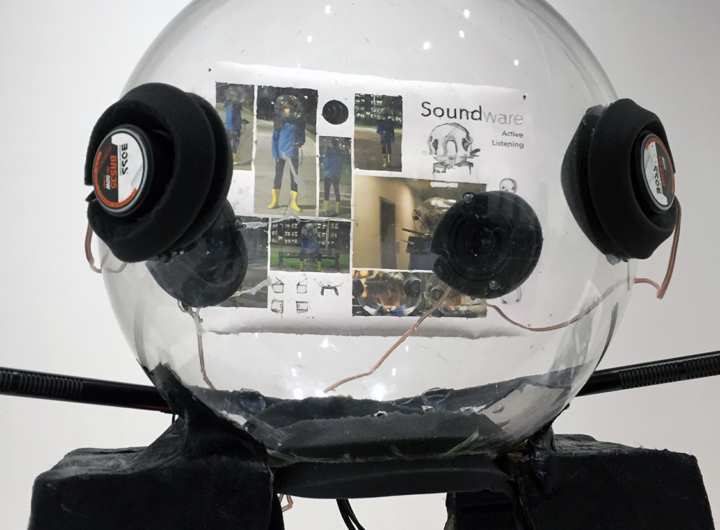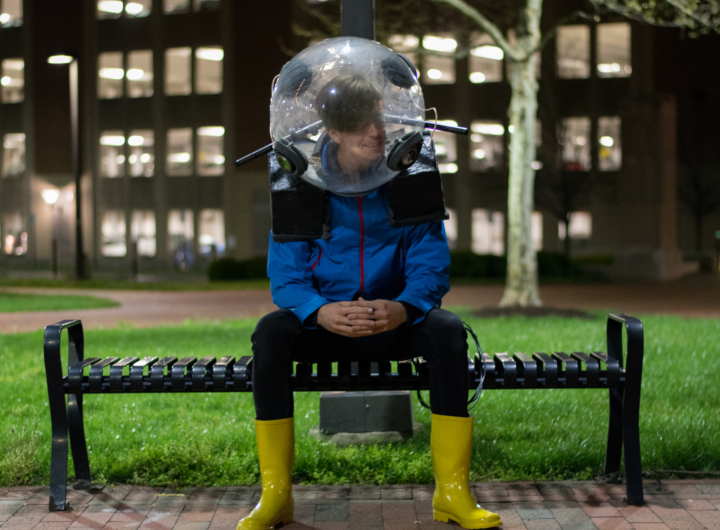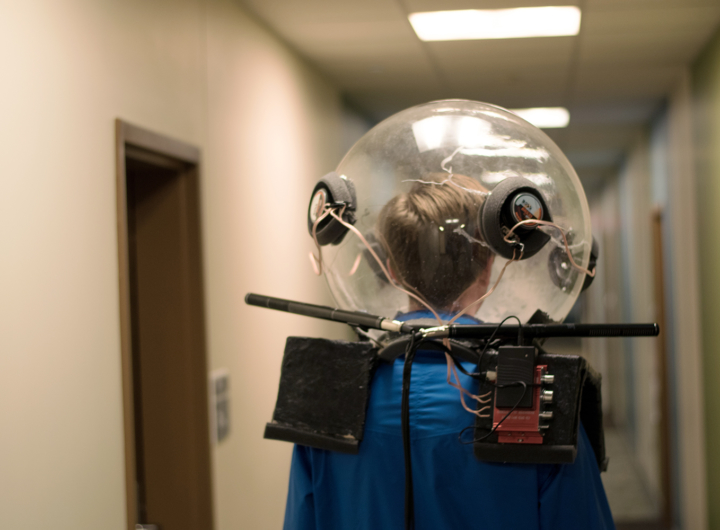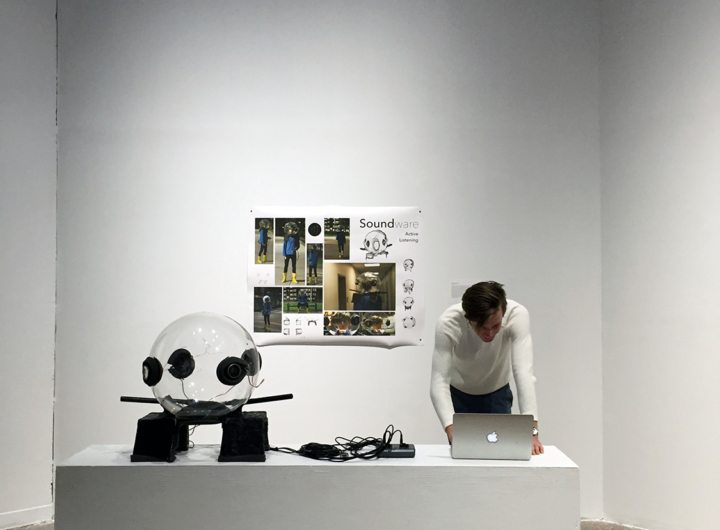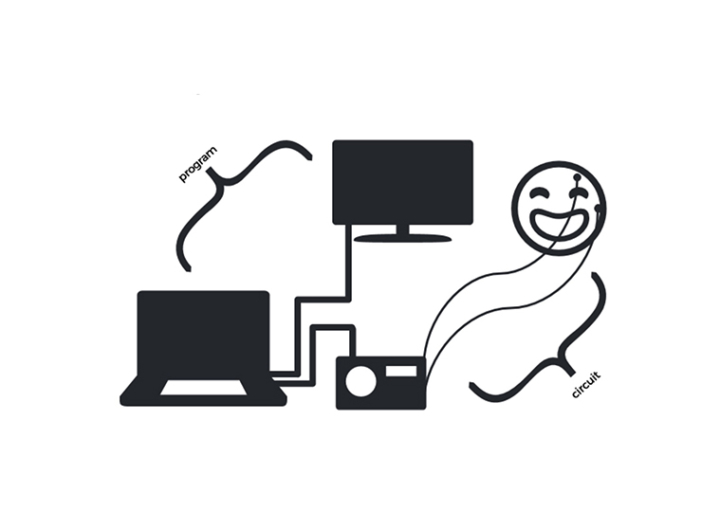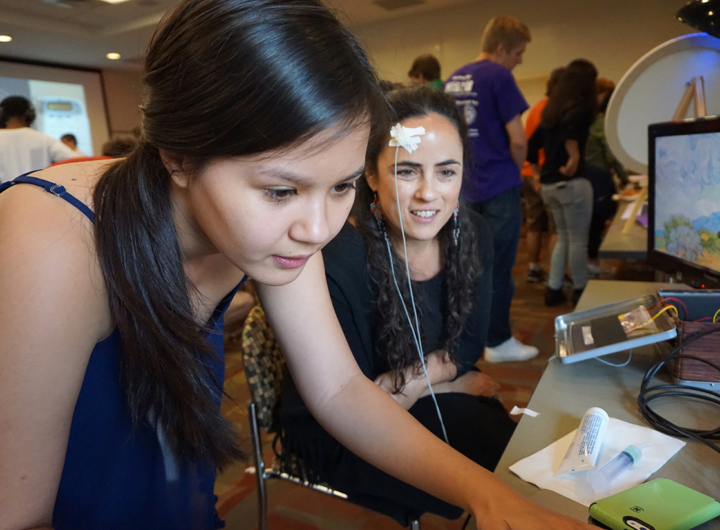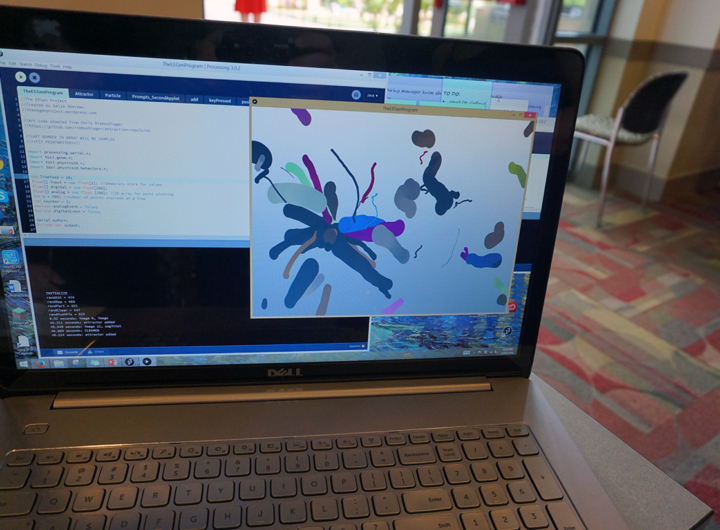Practicum in Digital Cultures and Creativity
Course Description:
This two-credit research practicum serves as the culmination of coursework in the Design Cultures & Creativity Program in the Honors College. It is designed to support large-scale individual (or collaborative) capstone projects by exploring the major issues and questions associated with conducting research in creative digital communities. Given the interdisciplinary nature of DCC, each project is highly individualized thereby providing the opportunity for co-learning structured around discussion, experimentation and group feedback. Through this course students are asked to synthesize information, demonstrate intellectual curiosity and resourcefulness, as well as develop critical thinking and creative problem solving skills. Particular emphasis is placed on professional development and situating research in the context of a larger community of creative thinkers, artists and designers.
Student Work:
Renae Lee
We Are, 2017
We Are is a four-part video installation and sculptural piece that highlights Asian American individuality. One of the many hardships Asian Americans face is stereotyping and generalizations. Asian Americans are lumped into big groups and statistics that sweep many issues under the rug. The juxtaposition of natural and artificial imagery work together with the projections of people to create a polarizing yet uniting effect. The stark contrast between the artificial and natural symbolize the differences between the people, however, the harmony and balance between the images represent the unity of the community as a community of unique individuals.
Ben Graney Green
Soundware, 2016
Soundware is a device worn over the head, encapsulating the listener in a sphere in which the only sound comes from the speakers mounted inside. Microphones outside pick up sound, send it through a computer for processing, and re-emit it through the speakers in real time to allow for live audio editing. It is effectively a forced meditation on the sounds in your environment.
More about the project: http://dcc.umd.edu/portfolio/bgraneygreen/
Galya Oberman
EEGen Project, 2016
The project aims to combine the worlds of neuroscience and art in an accessible, easy to understand, and relatively inexpensive way. It strives to allow even those with rudimentary knowledge of circuitry and programming to experience neuroscience in a new and exciting way through the derivation of open source material. By utilizing a homemade EEG circuit and program, brain waves are used to influence the generation of art which is displayed on this site in the form of videos and still images.
The project is composed of two main parts: the circuit and the program. The circuit retrieves brain wave voltages from the scalp and sends them through an Arduino into a dual monitor computer system, where one computer runs the prompt system and the other runs the art program.
The circuit is created using two electrodes, an amplifier, a DC bias, and an Arduino. The program is created using Processing, and is comprised of three parts: brain wave plotter, prompt system, and generative art output.
More about the project: https://theeegenproject.wordpress.com
Rubygirl is an interactive, animated superhero comic featuring Ruby, Java, and Cici, a trio of girls named after popular programming languages. The girls fight against programming villains and gender inequality in their adventures, and the reader can help them by figuring out basic computer science logic problems. Rubygirl aims to inspire young girls in middle and high school to try out computer science and to encourage the idea that females can and should pursue STEM fields. It also hopes to bring awareness to the lack of diversity in computing. To see the first chapter of the girls’ adventures through comic panels, animations, and interactive portions, please visit: http://linnytu.com/rubygirl
Cory Blair
Narcissist EP, 2015
DÉVÅZ is Corbett Blair’s experimental electronic/hip hop project that aims to progress the genre while maintaining listenability. The Narcissist EP is DÉVÅZ’s first official release.
Stream/download the album here: https://devaz.bandcamp.com/album/narcissist-ep
To see Cory's music featured in the DCist visit: http://dcist.com/2015/10/listening_party_devaz_125_mg_zoloft.php
Mitchell Arnett, Justin Albrecht and Derek Dougal
CUB3RT, 2014
In the name of science and Rubik’s cubes this collaboration utilized a 3D printer to create a device capable of solving any 3x3 cube permutation in less than 90 seconds executing no more than 25 face turns. Cub3rT leaves no cube unsolved.
A website was created alongside the Cub3rT as an educational resource geared toward high school students and provides all of the necessary information to construct a robot that solves a Rubik’s Cube. The site comes with lesson plans to learn some of the basic principals behind the more difficult aspects. There are also CAD models of every part used in constructing the project as well as a step-by-step assembly manual that guides you through the process of building a cube solver.
More about the project: http://cub3rt.wix.com/cub3rt
Christopher Bugtong
Direction, 2015
This piece hopes to challenge the concept of directorial control, a notion that is typically set aside in place of an engaging film world, and a white male-dominated gaze.
Margaret Gratian
The Hidden Code of Beauty, 2013


The concept of beauty in math is often reserved for describing the elegance of a proof or the importance of a theorem. However, when math is taken out of the context of theories and equations and put into a visual context in the form of images or models, it gains an aesthetic value that can be appreciated by a more general audience. This is especially true when considering fractals and other geometric shapes. A formula that means little to a non-mathematician can be translated into images of winding curves, infinite repetitions, and intricate patterns. Though visual representations of fractals can often seem so unreal and psychedelic that it is easy to brush them off as just pretty pictures, fractals are ubiquitous in nature and these images can serve to establish a more tangible link between the abstract world of math and the physical world. Fractals exist in snowflakes and clouds, in coastlines and mountains, in ferns and lichen; simpler, but just as appealing geometries can be found in the spirals of shells, the symmetry of flower petals, and the patterns in plant growth. Beauty, math, and nature are closely linked: math has beauty because it is an inherent property of our world, while nature has beauty because of its mathematical properties of form, symmetry, and repetition.
More about the project: http://theoremstoscreens.wordpress.com/about/


